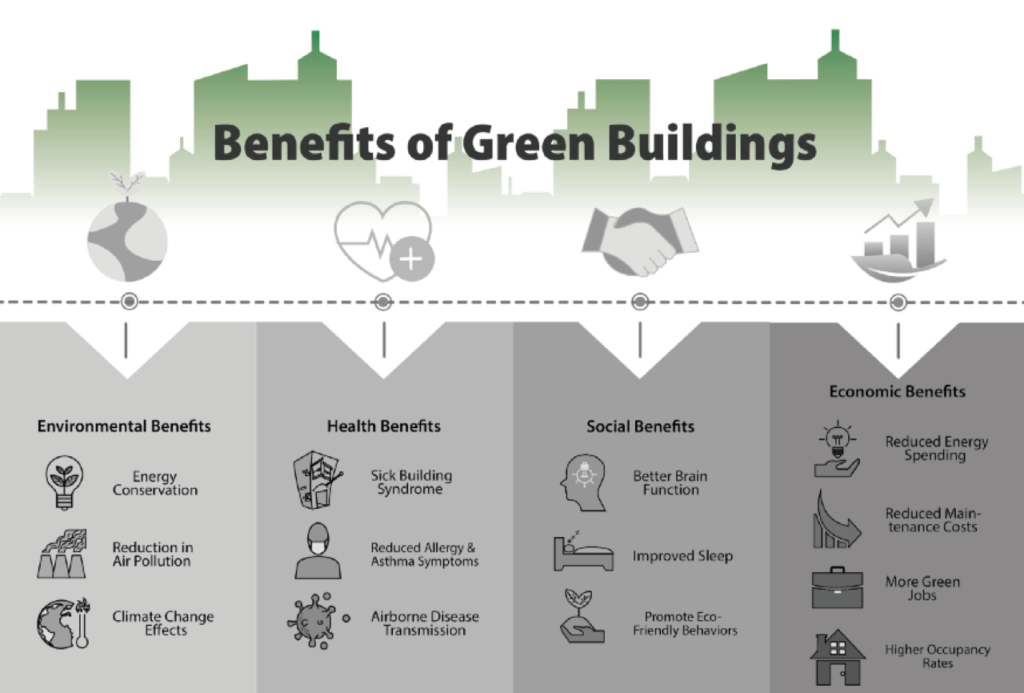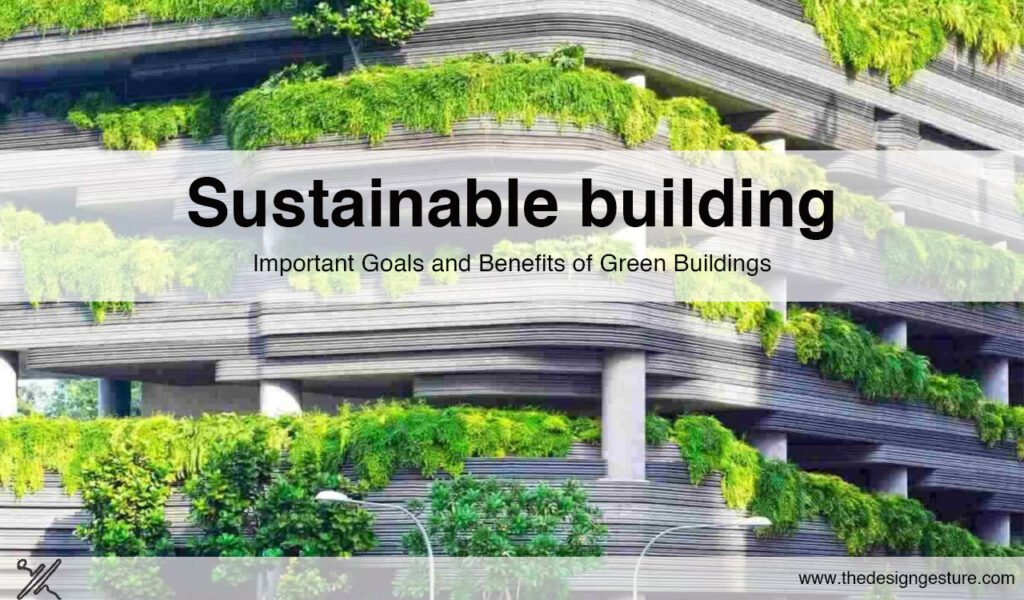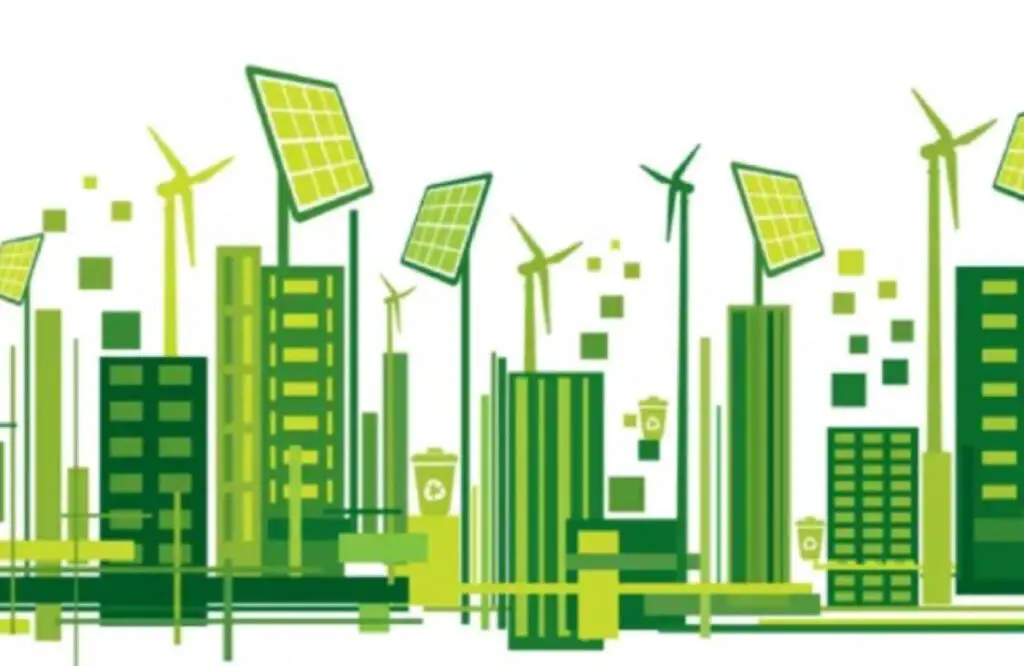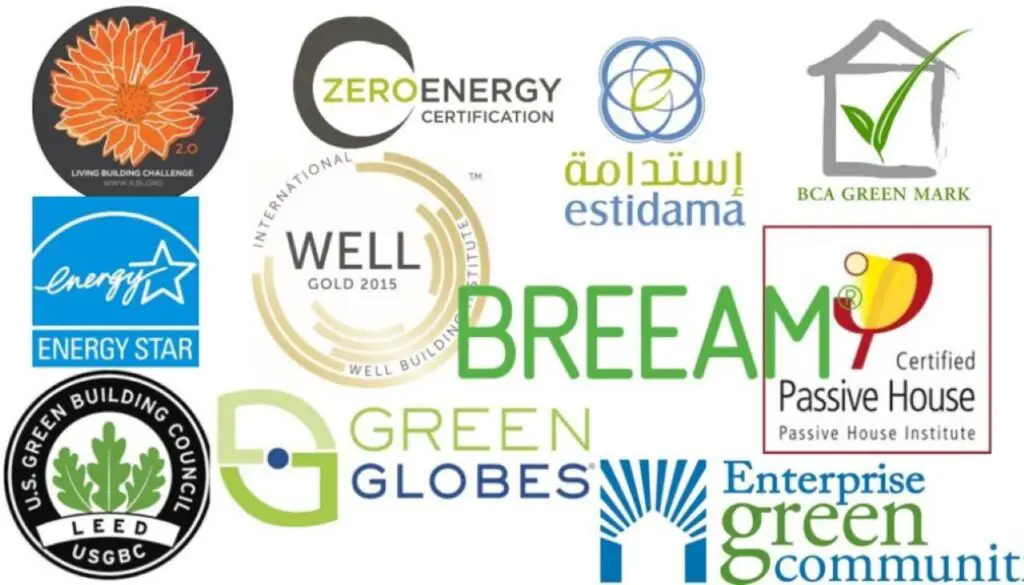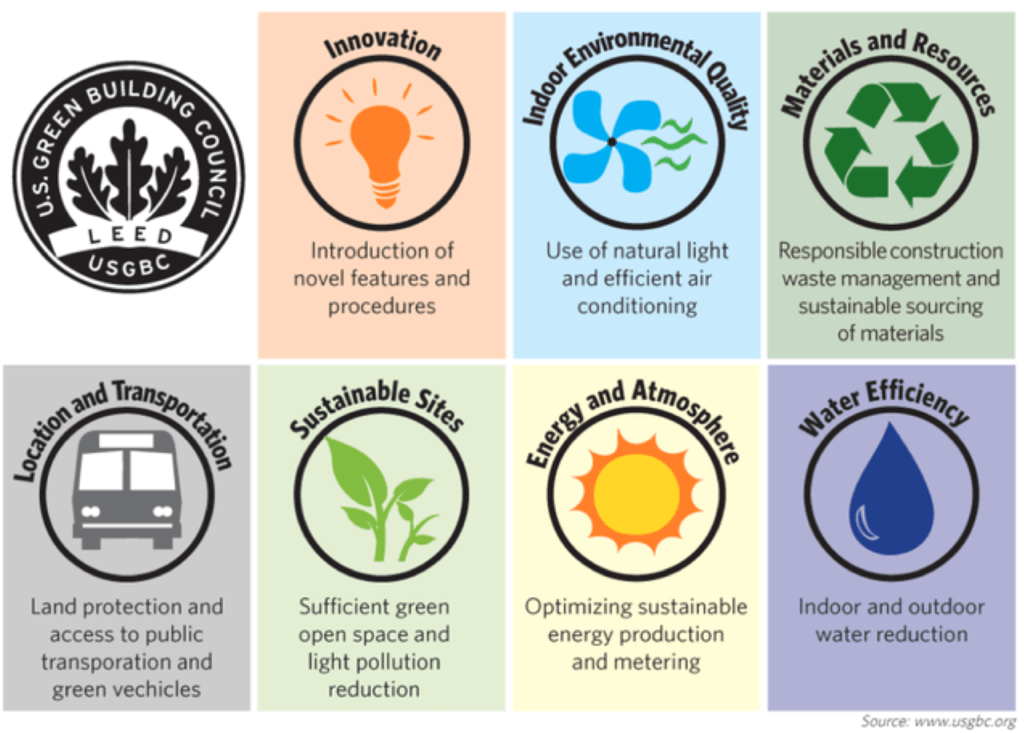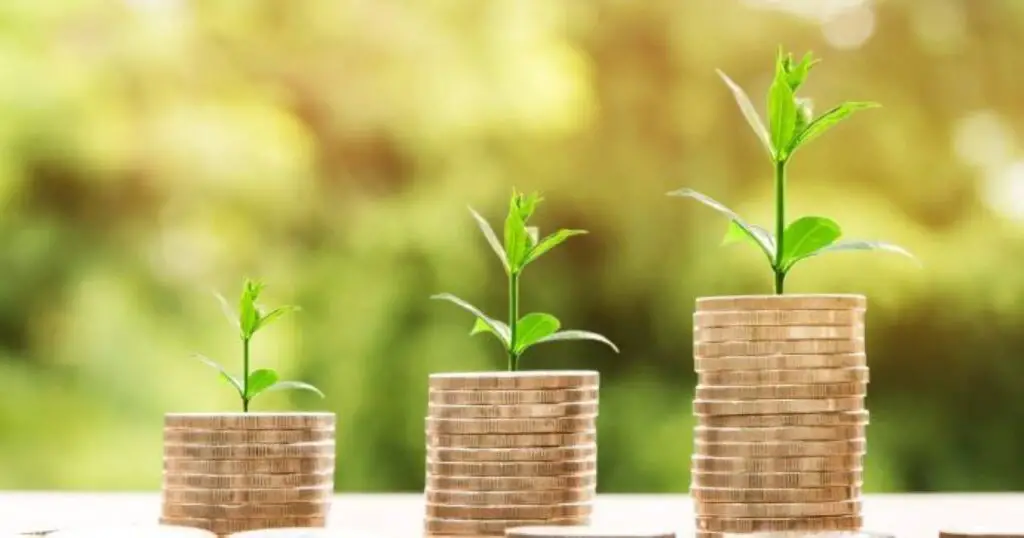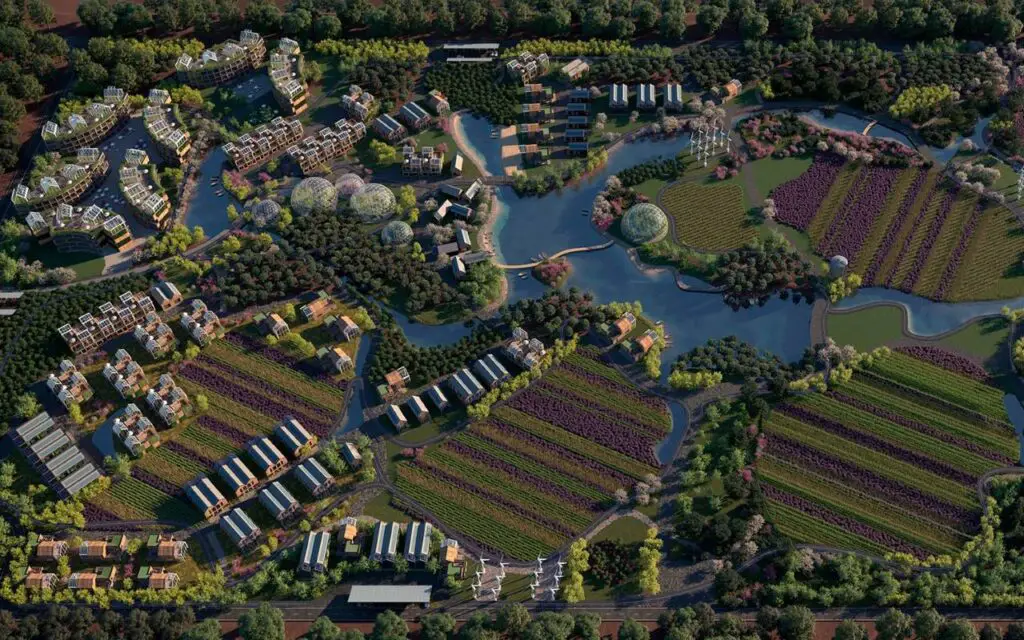Table of Contents
Introduction
A ‘green’ building is one that, by its design, construction, or operation, reduces or eliminates negative effects on our climate and natural surroundings while also having the potential to produce positive ones. Green building (also known as green construction or sustainable building) refers to a structure and the use of environmentally responsible and resource-efficient processes throughout the life cycle of a building: from planning to design, construction, operation, maintenance, renovation, and demolition. At all stages of the project, the contractor, the architects, the engineers, and the client must work together closely.
The green architecture extends and complements the traditional considerations of economy, usability, durability, and comfort in building design. The three elements of sustainability the planet, people, and profit, must all be addressed along the supply chain.
A building might have a variety of attributes that make it ‘green.’ These are some of them:
- Non-toxic, ethical, and long-lasting materials are used.
- Energy, water, and other resources are used more efficiently.
- Measures to reduce pollution and trash, as well as the facilitation of re-use and recycling
- Solar energy, for example, is a renewable energy source.
- Environmental considerations in design, construction, and operation
- Indoor air quality that is satisfactory
- A design that allows for adaptability to a changing environment.
- In the design, construction, and operation of a building, the residents’ quality of life is taken into account.
Why Should You Go Green?
Most people will discover that green architecture allows them to lower their carbon footprint and really benefit the environment.
Green buildings are those that are meant to have a lower overall impact on the environment and human health by doing the following:
- Use energy, water, and other resources wisely.
- Reducing garbage, pollution, and environmental deterioration.
- Improving productivity while protecting occupant health.
What is L.E.E.D. Certification?
L.E.E.D. serves as a framework for project teams to make decisions, encouraging best practices and innovation and recognizing excellent building projects with various levels of L.E.E.D. certification. L.E.E.D. (Leadership in Energy and Environmental Design) is a series of rating systems created by the US Green Building Council for the design, construction, operation, and maintenance of green buildings. The World Green Building Council is currently conducting research on the effects of green buildings materials on their users’ health and productivity and is collaborating with the World Bank to promote green buildings in emerging markets through the E.D.G.E. (Excellence in Design for Greater Efficiencies) Market Transformation Program and certification.
The British B.R.E.E.A.M. (Building Research Establishment Environmental Assessment Method) for buildings and large-scale developments, as well as the D.G.N.B. System (Deutsche Gesellschaft für Nachhaltiges Bauen) which benchmarks the sustainability performance of buildings, indoor environments, and districts, are two other certificate systems that confirm the sustainability of buildings. Other techniques include the Green Building Index (G.B.I.) in Malaysia, the Global Sustainability Assessment System (G.S.A.S.) in Australia, and the Global Sustainability Assessment System (G.S.A.S.) in the Middle East.
A L.E.E.D. Plague is a worldwide indicator indicating a building was built or is being operated in a healthy, high-performing, and resource-efficient manner.
Comprehensive grading systems for green buildings, such as L.E.E.D., Living Building Challenge, and BuildGreen, assess a building’s long-term viability based on a set of criteria. When taken together, these criteria paint a clear picture of what green architecture entails. The most typical requirements are mentioned below.
Atmosphere and Energy
Green buildings are created using energy-saving designs (i.e. passive houses are built with super-insulation and other techniques to ensure a tight building envelope and minimal energy consumption). Clean energy processes, such as geothermal and solar PV systems, are also commonly employed in sustainable building construction.
Site
Sprawl is always unsustainable. Rather than building new ground, green builders are urged to build on existing established property. To lessen inhabitants’ reliance on transportation, it’s also critical to construct near existing infrastructure, such as bus routes and libraries. The smaller the construction site, the better, because it leaves a less environmental imprint.
Resources and Materials
Wherever feasible, green builders use less material. They also salvage, disassemble, remanufacture, and refurbish things to reuse and recycle them. Durable materials are preferred since they do not need to be changed as frequently. Materials that are sustainably manufactured, originate from natural, renewable sources, and needless transportation is also carefully chosen.
Water
Low-flow toilets, greywater systems, and xeriscaping are all used to reduce water consumption. Rainwater harvesting and other water collecting systems are very important for sustainable building.
B.I.M.’s Contribution to Green Building Design and Construction
B.I.M. is a way for producing and managing digital representations of a location’s physical and functional qualities. Building information models (B.I.M.s) are files that can be extracted, transmitted, or networked in order to make decisions about a building or other constructed asset (often but not always in proprietary formats and including proprietary data). BIM software is used by individuals, businesses, and governments to plan, create, construct, operate, and manage a wide range of physical infrastructures, including water, waste, electricity, gas, communication utilities, roads, railroads, bridges, ports, and tunnels.
The Goals of a Green Building
Energy efficiency
Buildings are equipped with measures to reduce energy conservation, be it embodied energy or operating energy. In order to reduce operating energy usage, many designers over the years have utilized the tricks to effectively reduce air leakage through a building envelope. A building envelope is a barrier between a conditioned and a non-conditioned space. The employment of high-performance windows along with extra insulation in the walls ceilings and floors can help reduce operating energy usage. Designers also offer orient windows and awnings to minimize solar gain in summers and vice versa.
Life cycle assessment
Life cycle assessment helps to provide a broader outlook of a building on environment, social, and economic terms. It monitors the process of extraction of raw materials processing, manufacturing, distribution, use and maintenance, disposal, and recycling.
Water efficiency
Water conservation and water quality protection are important goals in sustainable building. In many regions, the demands for supplying aquifer exceed its ability to replenish itself, which is a key issue with water use. Facilities should increase their reliance on water that is collected, used, cleaned, and reused on-site to the greatest extent possible.
Materials efficiency
Lumber from forests that have been certified to a third-party forest standard, rapidly renewable plant materials like bamboo and straw, dimension stone, recycled stone, hempcrete, recycled metal (see copper sustainability and recyclability), and other non-toxic, reusable, renewable, and/or recyclable products are typically considered ‘green’ building materials. A high-performance or Roman self-healing concrete is offered for concrete.
Operations and maintenance optimization
It is not only enough that a building is designed and constructed sustainably. One must ensure that it remains a sustainable construction material via responsible operation and apt maintenance. The establishment of an O and M department in a building is beneficial to the long-term sustainability of a building.
Indoor environmental quality enhancement
One of the five environmental categories in L.E.E.D. standards, Indoor Environmental Quality (I.E.Q.), was intended to offer occupants comfort, well-being, and productivity. Indoor air quality (IAQ), thermal quality, and lighting quality are among the design and construction requirements addressed by the L.E.E.D. I.E.Q. category.
Waste reduction
The green design also aims to limit building waste in terms of energy, water, and materials. One goal throughout the construction process should be to decrease the quantity of waste that ends up in landfills. Buildings that are well-designed also help to reduce the amount of waste generated by their tenants by providing on-site solutions such as compost bins, which limit the amount of waste that ends up in landfills.
Cost and return on investment: Is Going Green Really More Expensive?
The cost of establishing environmentally friendly structures is the most often voiced criticism. It turns out that it was only a preconceived assumption. Yes, photovoltaics, new appliances, and cutting-edge technology are more expensive. Most green buildings cost an extra 2% upfront but pay for themselves 10 times over the course of their lives. In terms of the financial advantages of green construction. The stigma exists between understanding up-front vs. life-cycle costs. Money is saved as a consequence of more efficient utility consumption, which results in lower energy costs. Higher worker or student productivity might also be considered. Different industries are expected to save $130 billion in energy costs.
Green construction measures have been found to have a substantial impact on worker productivity in several studies. “There is a clear association between greater productivity and employees who enjoy being in their workplace,” according to research. Certain components of green building design, such as enhanced lighting, reduced pollutants, sophisticated ventilation systems, and the use of non-toxic building materials, can have a major influence on worker productivity.
According to studies, certain green buildings may provide a return on investment of $53 to $71 per square foot over a 20-year period. Further studies of the commercial real estate market have found that L.E.E.D. and Energy Star certified buildings achieve significantly higher rents, sale prices, and occupancy rates, as well as lower capitalization rates, potentially reflecting lower investment risk, confirming the rentability of green building investments.
Villages and green neighborhoods
Green construction concepts were being implemented not just for individual structures, but also for neighborhoods and communities, around the turn of the twenty-first century. The goal is to build zero-energy communities and towns, which implies they will generate all of their own energy. They will also recycle garbage, employ environmentally friendly transportation, and grow their own food.
What Is A Green Building And Its Benefits?
The advantages of green construction can vary from environmental to economic to social, with new technologies always being created to complement current practices in developing greener structures. We can take full advantage of environmental and economic performance by adopting greener methods.
When green building practices are combined with an environmentally friendly design and construction, the benefits are enormous. The following are some of the advantages of green construction:
Improves the quality of the air and water
According to research, greater indoor air quality, defined as low CO2 and pollutant concentrations and high ventilation rates, can result in up to an 8% boost in performance.
Protects the environment
When compared to other major polluting industries, the construction industry has the greatest potential for lowering greenhouse gas emissions.
Direct actions in buildings, such as energy efficiency, fuel switching, and the use of renewable energy, are claimed to have the potential to save up to 84 gigatonnes of CO2 (GtCO2) by 2050.
Sustainable building construction reduces water and energy waste
Green buildings in Australia that have earned the Green Star certification have been demonstrated to consume 51 percent less potable water and emit 62 percent fewer greenhouse gases than buildings designed to satisfy minimal industry standards. When compared to conventional structures in India, green buildings certified by the Indian Green Building Council (IGBC) save 20–30 percent of water and 40–50 percent of energy.
Costs are reduced, and the value of the product is increased
Building developers benefit from decreased construction costs and increased property values as a result of these structures. Green buildings, whether new or rehabilitated, have a 7% higher asset value than standard structures.
Improves the quality of the air and water
According to research, greater indoor air quality, defined as low CO2 and pollutant concentrations and high ventilation rates, can result in up to an 8% boost in performance.
Biodiversity and ecosystems are protected
By supporting the effective use of energy, water, and other resources, green construction benefits ecosystems. It also makes use of alternative energy sources such as solar power. Measures are frequently attempted to reduce pollution and waste while also allowing items to be reused and recycled. The materials utilized are non-toxic, ethical, and long-lasting.
Occupant Productivity Is Boosted
Green construction aims to create structures that are not only environmentally friendly, but also help people live healthier, happier, and more productive lives. These include utility bill reductions for renters or homes as a result of energy and water efficiency.
Enhances one’s quality of life
The tenants’ quality of life is addressed in the design, construction, and operation of green buildings. It improves the health and comfort of the occupants. According to research, greater indoor air quality (low CO2 and pollutant concentrations and high ventilation rates) can result in up to an 8% boost in performance.
Reduces the amount of strain on local infrastructure
Green buildings collaborate with local governments and utilities to provide green building and energy efficiency training and incentives. They also provide free lectures, public forums, and technical training to help local infrastructure withstand the load.
Existing homes may simply and economically go green, transforming into fully sustainable building, non-toxic, zero-water, and zero-energy structures.
